At expeditionportal.com, we are launching a new series called “Overland – Getting Started”. The goal of these installments are to provide a comprehensive resource to travelers interested in the best practices for beginning vehicle-dependent adventure and expedition travel. We will release the segments in an order that best mirrors the process of leaving for a big trip, like “Where do you want to go?”, “What is your budget?”, “What vehicle to choose?”, etc. We appreciate any feedback, corrections, contributions or criticism you may have, as the goal is to make the information as useful as possible.
Where do you want to go?
The first and most important consideration with overland adventure travel is where do you want to go? Many of us (i.e. me) get this one wrong at one time or another and start by researching vehicles and equipment instead of what is most important – what we want to experience and see. It is the adventure itself that should be the most valued, so we need to first decide where in the world we want to travel. Do you enjoy local exploration, digging deep into the history and wild places in your state? Do you want to cross glaciers? Do you want to travel deep into the jungles looking for Mayan temples? Do you want to travel the coast of Central America looking for the best surf break? Do you want to drive around the world?
really appealing.
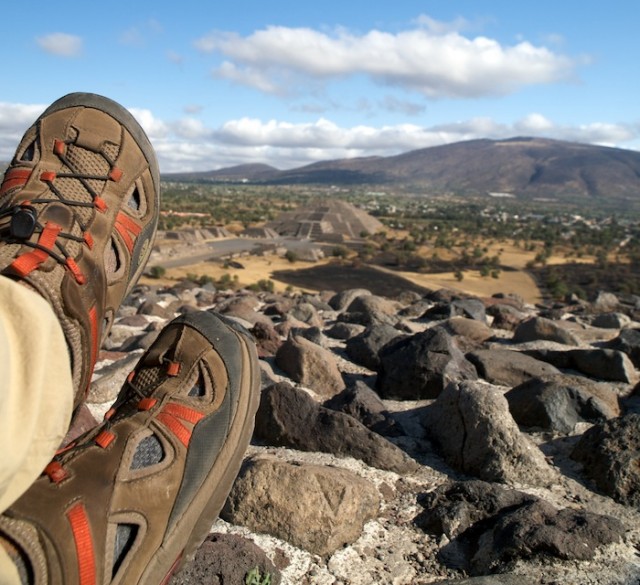
Mexico: Relaxing after the climb up Teotihuacan, the tallest pyramid in the Americas.
“Plans are nothing; planning is everything.” Dwight D. Eisenhower
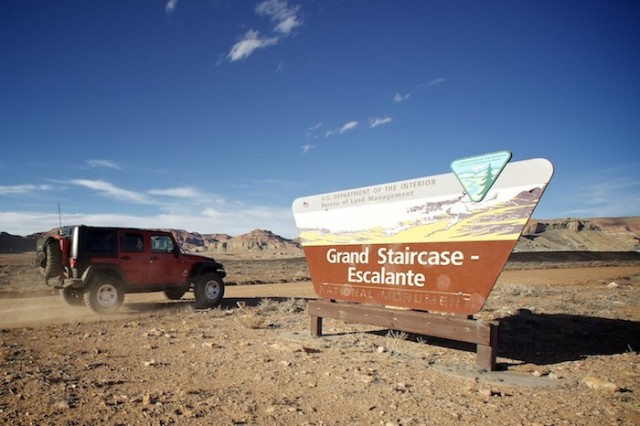
Southern Utah and the beautiful Grand Staircase-Escalante
Break Out the Maps
There are few things in life as enjoyable as spreading out a map of the world and daydreaming about where you want to go and what you want to see. For most overland travelers in North America, their trips are usually limited to two or three weeks of vacation, but there are certainly exceptions, some travelers taking months or years away.
You must determine your own personal travel style and estimate an average daily progress in kilometers. When traveling on roads, about 300 kilometers is normal, although some can easily manage 500+ (I have a personal record/hell of 1,800 kms in Siberia). A minimum of two days each week without driving is also advised to keep everyone fresh and provide opportunities to explore a little deeper. So realistically, a quick trip to Belize from Phoenix, Arizona should take a minimum of seven to 10 days just to get to Belmopan (the capital of Belize). A more relaxed pace with plenty of stops would be four weeks. Then allow a few weeks for exploring the country and a side-trip to Tikal and you need a minimum of a month. Even with four weeks, it is a really fast pace and you will miss a bunch of interesting stuff in-between. Realistically, a trip to Belize and back should take at least six weeks. You shouldn’t feel guilty if your trip is fast paced. Sometimes time off is limited and it is easy for retired or jobless travelers (or worse, keyboard jockeys) to judge someone else’s pace. It is your trip – go at the pace you like or are restricted to.
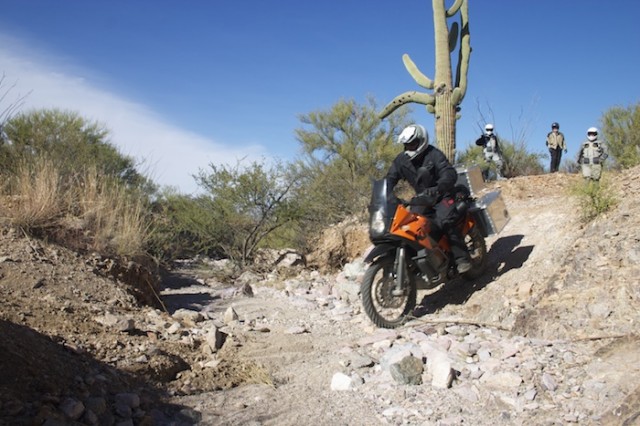
Technical adventuring in the deserts of Arizona
In 2009, I drove from Prescott, Arizona to the Darien Gap in Panama. We had a wonderful time and stopped often, exploring places like Copper Canyon, Guanajuato, Belize, the Petén in Guatemala, eco-lodge in Costa Rica, etc. The trip took two months and we only drove one direction, shipping the trucks back from Panama. I would still consider that pace on the fast side and we missed a bunch of interesting places. In the end, it is always a compromise. I know people that have taken two years to complete the same route and they still wished for more time!
- Fast Pace: 3-500 kms per day with two days of rest per week.
- Moderate Pace: 150-300kms per driving day with two or three days of rest per week.
- Slow Pace: 150-300 kms per day with more than half of your days spent without driving.
- Retired: Drive when you want, stop when you want. No time restrictions.
This pace assumes developing world travel. In developed countries it is easy to achieve 5-700kms in a day, if you want or need to.
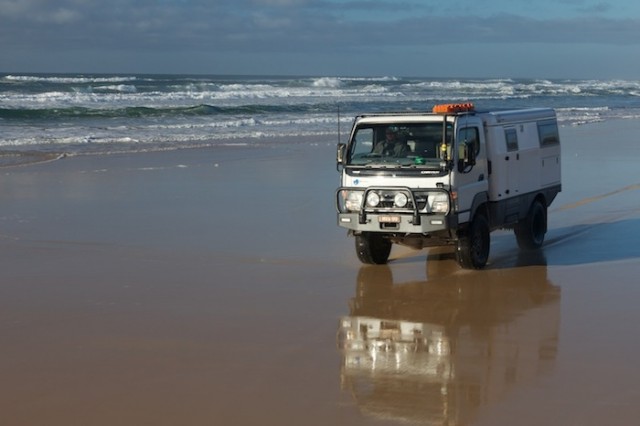
The comfort of an EarthCruiser along the beach. Frasier Island, Australia
Realistically, most of us will plan our first overland adventures to locations near where we live and using the vehicle we own. Start with a weekend trip, and then progress to a weeklong excursion, exploring a little further and spending more nights living out of the vehicle or motorcycle. With those exploratory trips complete, determine the timeframe you have available and then draw a big circle on the map using the kilometer/mileage estimates above, originating from your home and encompassing the distance reasonable for you to travel inside the range. Given the same travel schedule, the closer your travels are to home, the more relaxing the pace will be and the more details you will be able to enjoy. You will also need to consider terrain factors, as it takes longer to drive the Arizona Traverse than all the way to Belize. It takes five days to cross the 50kms of the Dusy Ershim trail or nearly 20 days to cross the 2,000km Canning Stock Route because of the terrain difficulty. Make sure the schedule reflects terrain, weather, border crossings, etc.
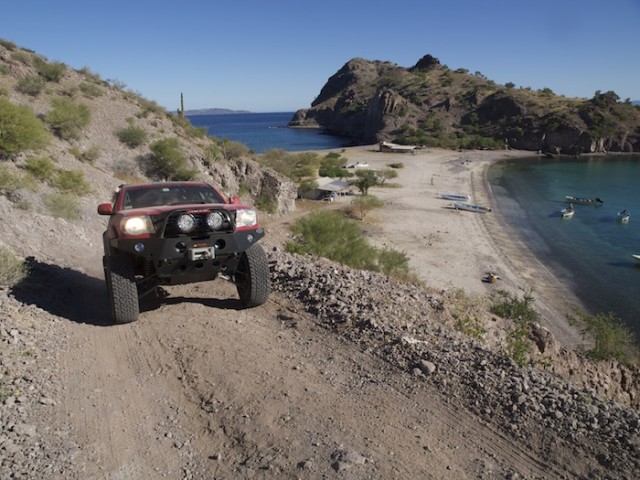
A remote beach camp in Baja. Agua Verde.
Additional Research: Books and Websites
Books:
Americas Regional:
- Backcountry Adventures by Massey and Wilson
These detailed route guides are available for California, Arizona, Utah and Colorado. They include day trips and longer excursions and are exceptional resources.
- Central and South America by Road by Pam Ascanio
The 1996 publication date means the information is getting dated, but will still serve as a reference.
- Americas Overland, The Driving Handbook by Greene and Greene
An excellent resource with recent and comprehensive content. Written by global travelers with a decade of experience.
Global Guidebooks:
- Overlander’s Handbook by Chris Scott
- Adventure Motorcycle Routes by Robert Wicks
For regional guidebooks featuring other continents, they are numerous and varied. An example of an excellent resource is the HEMA Maps Great Desert Tracks Atlas and Guide, which is my current reading, planning for a trip across the Canning Stock in Australia
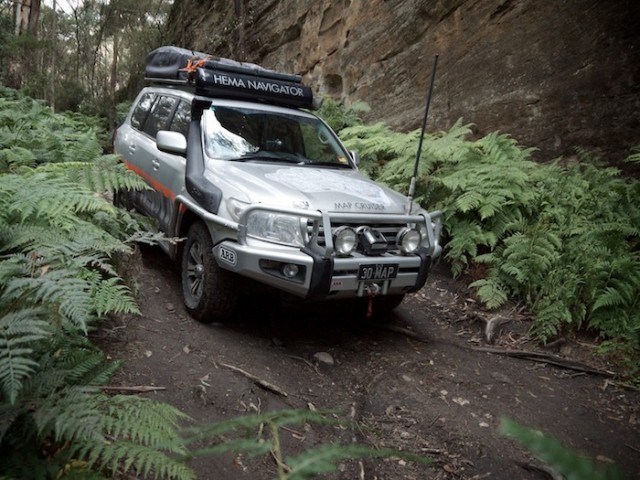
Driving a 200 Land Cruiser in the mountains of Australia. Beautiful and challenging!
Web:
The web is packed with region-specific sites. They vary in accuracy and some feature information too obsolete to be useful. Be sure to determine the age of the information first. There are also numerous regional forum communities. These can be very current but range widely on the experience of the posters.
- Expedition Portal Planning Forums
- Expedition Portal Trip Reports
- Drive the Americas: A comprehensive site with information on traveling in the Americas with recent information.
- ADV Rider: Fantastic trip reports from adventure motorcyclists
- HUBB: Primarily motorcycle content, but lots of honest, real-world advice.
- Wiki Overland: Up to date and curated from multiple contributors, one of the best resources for the Pan American Highway. Other continents being added.
- Here are a few useful links to get you started:
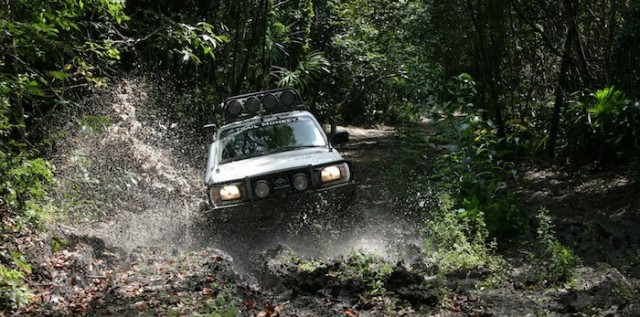
Our much-trusted Tacoma traveled from the frozen Arctic at Tuktoyaktuk to the Darien Gap in Panama.
Points Unknown
Deciding where you want to travel, at what pace, and at what level of comfort is the most important starting point. Start slow and make your first trips close to home and steadily branch further. My first few trips were in the desert southwest and then extended into Sonora and Baja, Mexico. Next was Copper Canyon and then a short trip to Morocco. It was years before we made our first multi-month, multi-country adventure. For our next segment, we will review accurate budgeting and basic costs; this will include a detailed budget sheet (the same we use for our trips). Knowing where you want to go and the budget you have all comes before the vehicle selection. While it is certainly tempting to start with the truck or motorcycle first, I know of many $50,000 Land Cruisers that are ready to go around the world, but hardly leave the owner’s zip code. Spend your time and money on the trip before the truck!
Summary:
- Plan some weekend and weeklong trips near your home to determine travel pace and interests that suit you and your travel companions.
- Determine the realistic time you will have available for the adventure. Is it one week? Two weeks? A year?
- Calculate your preferred travel pace and then grab some maps. Draw a big circle around your departure location and determine the region you can explore with the time available.
- Circle areas and locations of interest on the map and rough-out a route. Know that the route can always change and spontaneity can be one of the great blessings in travel.
- Now that you know the total time, estimated distance and region you intend to travel in, you can work on a travel budget. (Budgeting, coming in our next installment).
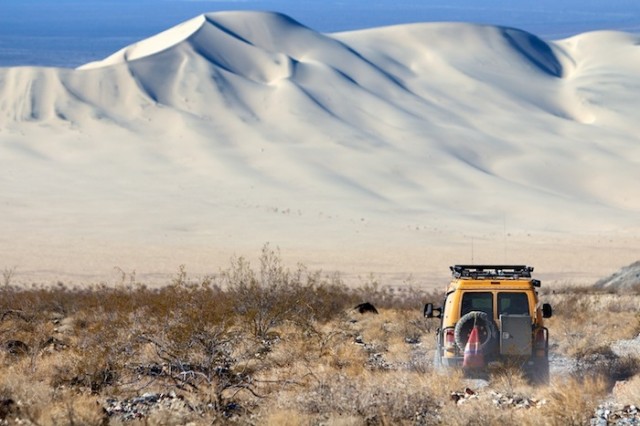
The comfort AND capability of a Sportsmobile in Death Valley
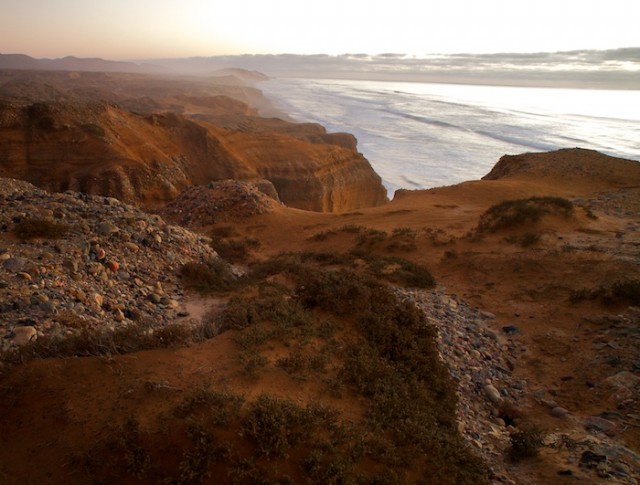
The rugged and beautiful Baja coastline.
A Word of Caution:
Overland travel is dangerous and complex by nature, so ensure that you obtain advice from multiple sources. The best way of determining the accuracy and veracity of information you read is to ask these two simple questions:
- Does the author have varied and recent experience with the subject or location?
- Have they crossed borders (no, Mexico doesn’t count) in a vehicle they have specified and prepared? Did they just rent a vehicle and use a tour guide, or did they experience the border crossings, paperwork, shipping and research required to travel on their own?
- Has the author actually traveled in the place they are providing recommendations for?
- Rarely trust advice from someone that has never been to the place you are inquiring about. People often sensationalize and exaggerate information about places they have not traveled to.
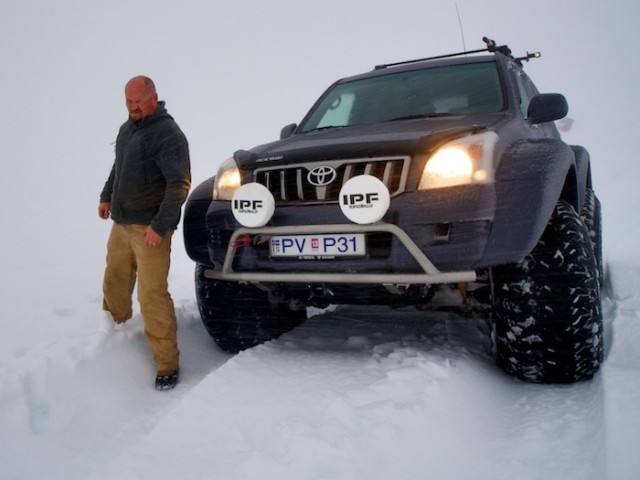
The author, assessing a Glacier route during a whiteout. Iceland


